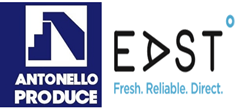Before we get into the details regarding how to avoid the pitfalls of control tower projects, it is important to define their purpose. A supply chain control tower is a platform that allows you to bring data from several sources within your organization and organizes the information for efficient use.
What you get in most cases is a dashboard that gives you access to key metrics. This data can help the organization identify the areas that need immediate attention. Predictive analysis is also part of this process and it helps the organization take a more proactive approach.
Some relevant data that can be analyzed includes:
- Excess inventory or stock outs
- Inflated working capital
- Late or missed deliveries and how they affect customers
Archisage has spent the last 4 years involved in a number of Control Tower implementations using different technologies such as Power BI, Tableau and IBM Supply Chain Intelligence Suite. Through these implementations; we have learnt many lessons and have identified some key reasons why some implementations don’t seem to work as expected.
Data! Data! Data!
Most Control Tower projects have as their central aim - visibility. This is because the business does not have transparent and easy access to the data spread across multiple systems. A side effect of this - the implementation will expose all the data issues within your organization!!!
Data Quality
The quality of the data is a huge factor to consider when you seek to achieve the best results with a project. If the quality is low, the actions based on that data will lead to mediocre results. A common theme that we have seen is that the data coming from the source systems may not be clean. A couple of examples showing the impact of data quality on an implementation:
-
One implementation highlighted tens of thousands of orders on hold with many from more than 4 years ago. The KPI measuring Orders on Hold was pretty much unusable as it was full of old zombie orders.
-
Another implementation showed 200000+ purchase orders as still being open in the system when in reality; the vast majority were closed. Their processes at the warehouse meant that floor staff would receipt the orders in one system; which was supposed to update the core system; but when integration failed; there was no fallback process in place. Hence, the core system still had open orders; which was also the core data source for the Control Tower.
Do not underestimate how much time and effort is required to cleanse the data from the source systems. It is not simply a matter of putting a rule in place like ignore all data more than an year old. That is just a bandaid and a bad one at that. Factor into the project plan that you will find data quality issues and will need to allocate some time and resources to cleaning the data in the source systems.
Data frequency
A limiting factor in effectiveness of implementations is the frequency with which data is synchronized with the Control Tower. If users are wanting real-time dashboards; but the data is available only once a day; the system may not very effective. There could be limitations in the source systems - inability to export the data more frequently; or negative performance hit to core systems restricting export frequency.
The Control Tower is supposed to bring all the data to one place and enable users to interrogate it and make decisions without going to other locations to get the data. With mismatched frequency; when the users see an issue on the dashboard; they then have to log in to the source systems to investigate further find that the situation has already been resolved. This leads to wasted time by users looking at things that are already resolved and leads to reduced trust in the system and over time; reduced usage due to lack of productivity.
Data scope
The main goal of a control tower is that it will gather data from all existing sources in order to help you achieve optimal visibility. This includes both internal and external data sources. Think of this as being able to see everything from the top of a tower without anything blocking your view. For example, without information from shipping lines on expected delivery dates of your shipments, a control tower can’t effectively identify which customer deliveries are at risk of delays. The goal of the Control Tower is to give you an incredibly broad view of every aspect of your process.
Choosing a platform that supports such external sources can greatly reduce the implementation timeframes. For eg: using Power BI; the organisation is responsible for ensuring that external data is brought internally and they have to build the interfaces for data retrieval. Whereas, a tool like Supply Chain Intelligence Suite has modules like FourKites which will automatically bring in shipping data to augment your own internal data or enable the development of customized integrations to bring in data from the likes of Australia Post and other 3PLs.
Not Data! Data! Data!
There are also factors outside of data that impact the success of Control Towers. These are more intangible in nature; so being aware of them at the start will help ensure smoother delivery.
Unclear Objectives
Control Towers are not silver bullets that will solve all supply chain problems. Management needs to understand the optimal ways to make use of a control tower in order for it to be a truly valuable investment. Management may have a view of what they are wanting or have been sold something with fancy bells and whistles; but that may not align with what the people on the ground need. It is important to involve the eventual users of the system from the very beginning. At the same time; we need to guard against building something based on current processes. Control Towers do involve changing mindset and processes and taking the users along on that journey is vital. This is going to make it easier for the organization to see the expected results.
Business Intelligence != Control Tower
Sometimes customers think they want a Control Tower, but expect to see dashboards showing Sales Revenues, Sales trends, profit margins, tracking actuals vs budgets. This is not what a Control Tower is meant to do. Control Towers are a tool that helps an organization identify issues or potential issues in their supply chain so that they can take proper steps to handle and solve the problems. The key target users of a Control Tower are the people at the ground level fighting fires on a daily basis. The management layer should have dashboards as well; and most Control Towers do provide a management view; but that is not the main purpose. Being able to balance the differing needs of differing users is a key part of any implementation and needs to be included in the scope of delivery.
What next?
One key aspect that often gets forgotten is what next? A Control Tower has been implemented and the business now has visibility into the key areas and users are able to quickly identify issues - but what next? How do the users go about resolving the issues? Do they know need to go to into other systems or contact others over email. We have implemented solutions in Power BI where the dashboards provide everything the user needs from a visibility perspective. But then; the data is downloaded into excel and emailed to others. Email is still the biggest workflow engine in use in business today. However, it is also the least efficient with no tracking and things often falling through the gaps.
We have found the Work Queues feature in Supply Chain Intelligence Suite to be unique in pushing the boundaries of a Control Tower further - by going further than just visibility to also encompassing the actions to take next by embedding a full customisable workflow engine into the same tool. The users do not need to go outside the tool - everything they need is brought to them into the tool. It helps take the control tower from a purely visibility dashboard to a complete workspace that allows users to track items to completion.
The implementation of a Control Tower is not just a technology implementation; but a process implementation as well. The way people do their work will change - so; it is important to model the complete end to end process and ensure that one or more tools are part of the solution to cater for the complete process.
Final thoughts
Our experience over the past few years using a multitude of solutions - what we have learnt - the tools used are the not the determining factor into the success of a Control Tower. Each tool has its strength and weaknesses - Power BI is user friendly in that any user can create dashboards and reports that slice and dice the data how they like it. Tableau is visually amazing. Supply Chain Intelligence Suite is enterprise level with its built-in data model for Supply Chains; external data source integration capabilities; ability to integrate AI Predictive models and workflow engines. However, the challenges to a successful implementation are mostly non-technical in nature. It comes down to two things - data and process change.
I'd love to hear from others on their experiences with Control Towers. What made them work or not? What have you learnt that you would take into a new project?


